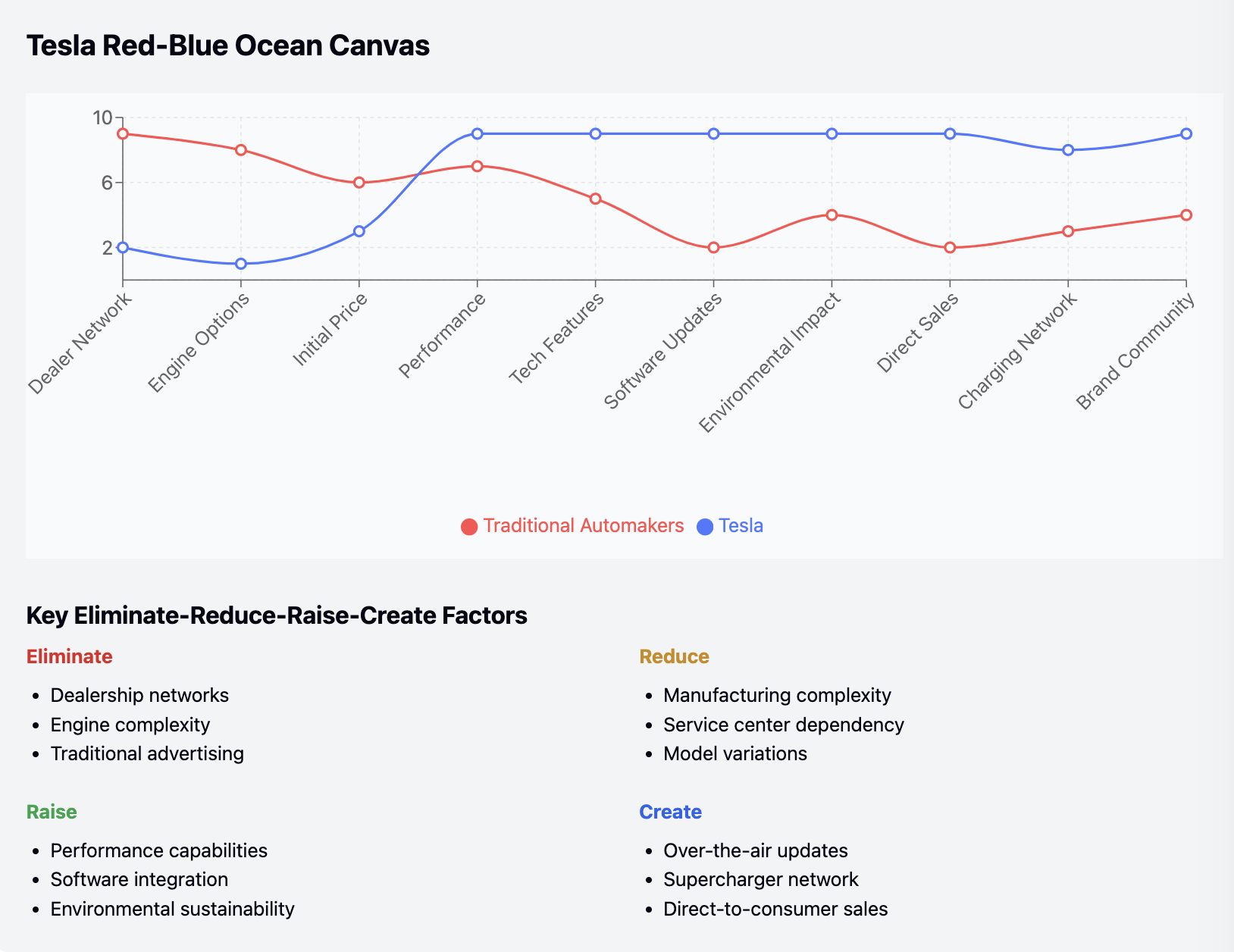Red-Blue Ocean Canvas - Map your differentiation
Nobody likes complex strategy frameworks that gather dust in PowerPoint presentations, but there's one tool that's genuinely worth your time: the Red-Blue Ocean Canvas.
A Red-Blue Ocean Canvas helps teams think clearly about where they stand in the market and, more importantly, where they could go. It's like having a GPS for your business strategy, showing you both the crowded highways (red oceans) and the unexplored backroads (blue oceans).
Remember that visualizing your competitive landscape is way better than keeping all those market insights floating around in your head. We're all guilty of thinking we know our market inside and out, but putting it on paper often reveals surprising blind spots.
A good canvas should map out your current market position, identify opportunities for differentiation, and help you spot uncontested market spaces. It's your team's shared reference point for making strategic decisions about product features, pricing, and market positioning.
What makes a good Red-Blue Ocean Canvas
A solid Red-Blue Ocean Canvas should help you understand where you are and chart a course to where you want to be. It's not just about drawing pretty charts – it's about gaining genuine insights. We believe that this canvas must include these key elements: Current Position - Your honest assessment of where you compete today Competition Mapping - Who else is fighting for the same customers Value Curves - What factors the industry currently competes on Blue Ocean Opportunities - Potential new factors you could introduce Action Plan - Concrete steps to move toward blue ocean territory To keep things practical and actionable, it's best to link this canvas to your other strategic documents (like your PRD or business plan) and update it regularly as market conditions change.
Examples
A great example of Red-Blue Ocean thinking in action is Tesla
How to get started
You can use this straightforward approach to create your first Red-Blue Ocean Canvas:
Block out focused time: Set aside 2-3 hours with your core team. This isn't something you want to rush through between meetings. Map the current reality: Start by plotting where your industry competes today. What factors does everyone focus on? Price? Features? Service quality? Draw your value curve: Plot how you and your competitors perform on these factors. Be brutally honest – sugar-coating doesn't help here. Look for blue water: Ask yourself: What factors could we eliminate? What could we reduce? What should we raise? What new factors could we create? Test your ideas: Before going all-in on a blue ocean strategy, test your assumptions. Talk to customers. Run small experiments. Create an action plan: Map out concrete steps to move from your current position toward that blue ocean opportunity. Review regularly: Markets change, competitors move. Make it a habit to revisit your canvas quarterly.
Remember, the goal isn't to create a perfect strategy document – it's to think clearly about where you're competing and spot opportunities others might miss.
FAQ
Isn't this just another fancy business school framework?
It might look that way, but unlike many frameworks that just help you analyze what exists, the Red-Blue Ocean Canvas helps you imagine and create new market spaces. It's a tool for action, not just analysis.
Do I need this if I already have a lean canvas?
Your lean canvas defines your overall strategy. The Red-Blue Ocean Canvas helps you spot opportunities and where to focus to create more value, new markets or reimagine existing ones. They're complementary tools that serve different purposes.
